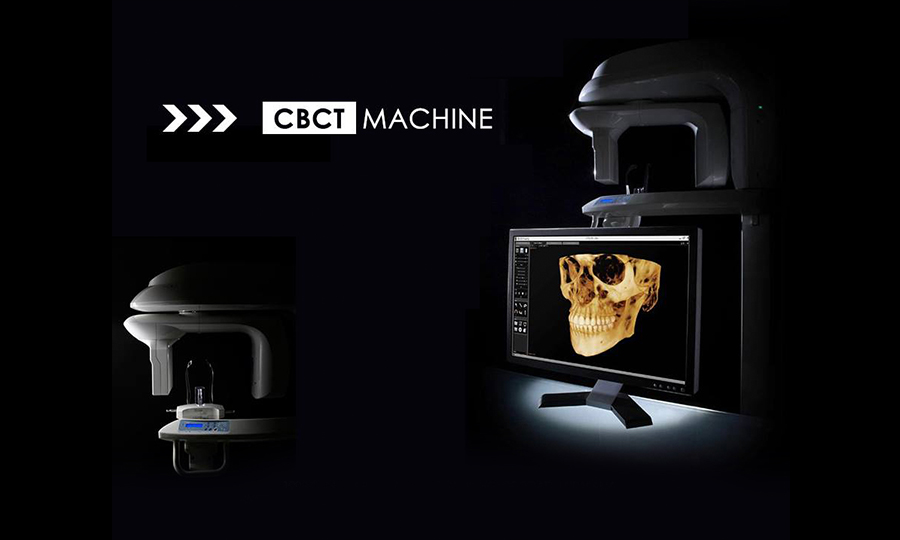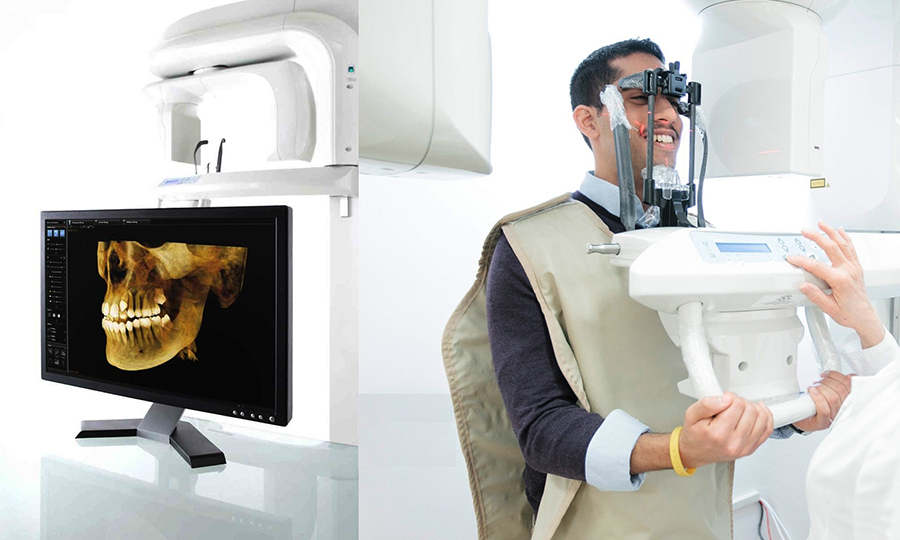

CBCT scan produces a 3D cross-sectional image which gives a more clear view.
Cone beam computed tomography (or CBCT), CBCT has become increasingly important in treatment planning and diagnosis in implant dentistry, ENT, orthopedics and interventional radiology (IR), among other things. Perhaps because of the increased access to such technology, CBCT scanners are now finding many uses in dentistry, such as in the fields of oral surgery, endodontics and orthodontics.
During dental/orthodontic imaging, the CBCT scanner rotates around the patient's head, obtaining up to nearly 600 distinct images. For interventional radiology, the patient is positioned offset to the table so that the region of interest is centered in the field of view for the cone beam. A single 200 degree rotation over the region of interest acquires a volumetric data set.


